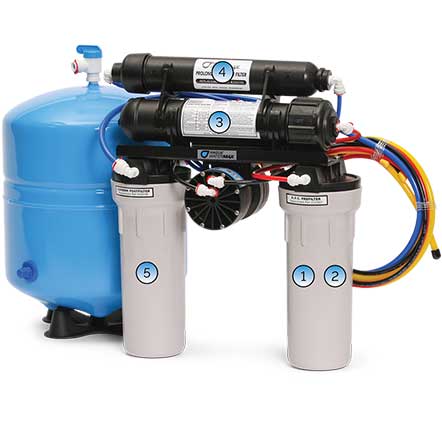Reverse Osmosis
What is the Reverse Osmosis
Reverse osmosis (RO) is a water purification process that employs a semi-permeable membrane to remove impurities from water. By applying pressure to the more concentrated side of a solution, water molecules are forced through the membrane, leaving behind contaminants. RO systems typically include pre-filtration to remove larger particles, followed by the reverse osmosis membrane for purification, and sometimes post-filtration for further refinement. One of the main advantages of reverse osmosis is its ability to eliminate a broad spectrum of contaminants, including heavy metals, dissolved solids, bacteria, and viruses, making it an effective method for producing clean, potable water. RO technology is versatile, finding applications in both residential and industrial settings due to its compact size and efficiency. Overall, reverse osmosis water filteration service in texas is a reliable and widely used method for ensuring access to safe drinking water, playing a crucial role in addressing water quality problems worldwide.
Benefits of the Reverse Osmosis
Reverse osmosis (RO) offers numerous benefits in water purification. Firstly, it removes up to 99% of contaminants, including microscopic particles, salts, bacteria, and chemicals, ensuring high-quality drinking water. RO is environmentally friendly, as it doesn’t require the use of chemicals for purification, making it safe for both consumption and the environment. Its versatility allows for application in various settings, from residential to industrial scales, catering to different purification needs. Additionally, reverse osmosis water filtration in texas are highly efficient and reliable, providing a consistent supply of clean water. They contribute to improved the health of the drinking water by removing potentially harmful substances from water. Furthermore, RO technology plays a crucial role in addressing water scarcity issues, particularly through desalination processes, providing access to potable water in regions with limited freshwater resources. Moreover, the low energy requirements of RO systems make them more sustainable compared to other purification methods, reducing overall environmental impact. Overall, the benefits of reverse osmosis extend beyond mere filtration, offering safe and sustainable solutions for clean water provision.
Process of the Reverse Osmosis
The process of reverse osmosis (RO) involves several key stages to purify water effectively. Firstly, raw water enters the RO water filter system in texas and passes through pre-filtration stages to remove larger particles, sediment, and impurities. Once pre-filtered, the water undergoes high-pressure treatment as it enters the reverse osmosis membrane. This membrane, typically made of semi-permeable material, allows only water molecules to pass through while blocking the passage of dissolved salts, contaminants, and other impurities. Under pressure, water molecules are forced through the membrane, leaving behind concentrated brine containing the rejected impurities. The purified water that successfully passes through the membrane is collected on the other side, ready for consumption or further treatment. Post-filtration may be employed to polish the water further and remove any remaining traces of contaminants, ensuring the highest quality of purified water output. Overall, the reverse osmosis process efficiently separates clean water from impurities, offering a reliable method for producing safe and potable drinking water in various applications, from residential to industrial settings.

The H6000 RO filter is likely a specific model or type of reverse osmosis (RO) water filtration system. While I can’t provide detailed specifications for a specific product named “H6000” without further information, RO filters generally operate on the principles of reverse osmosis to purify water by removing impurities and contaminants. RO filters typically consist of several components, including a pre-filter to remove sediment and chlorine, a semi-permeable membrane that selectively allows water molecules to pass through while blocking contaminants, a post-filter to further improve water quality, and a storage tank for purified water. These systems use pressure to force water through the membrane, producing clean, drinkable water while trapping pollutants.
If you have a specific H6000 RO filter in mind, you may want to consult the product manual or specifications provided by the manufacturer for detailed information on its features, performance, and installation requirements.

The H3500 RO filter likely denotes a specific model or type of reverse osmosis (RO) water filtration system. RO filters employ a sophisticated process to purify water by removing impurities and contaminants, ensuring clean drinking water. Typically, an RO filtration system includes various components such as pre-filters to remove sediment and chlorine, a semi-permeable membrane that selectively allows water molecules to pass while blocking contaminants, post-filters to enhance water quality further, and a storage tank for purified water. These systems utilize pressure to force water through the membrane, trapping pollutants and yielding clean, potable water. While detailed specifications may vary depending on the manufacturer and model, RO filters like the H3500 are designed to provide efficient water purification for both residential and commercial applications. They play a vital role in ensuring access to safe and clean drinking water, contributing to improved health and well-being.



